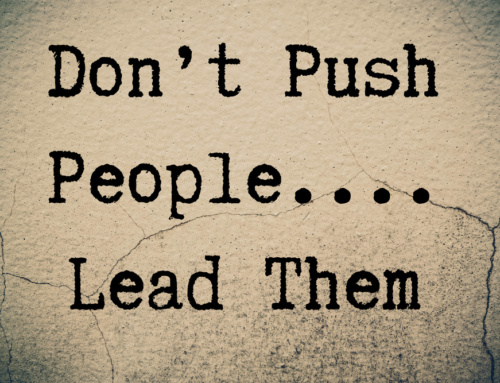 What are the obstacles in front of your team and how hard are you working at knocking them down? Chances are you can and should be working harder at this critical task.
What are the obstacles in front of your team and how hard are you working at knocking them down? Chances are you can and should be working harder at this critical task.
A number of years ago, I was responsible for the product and marketing activities of a prototype systems division inside one of the world’s largest consumer electronics firms. It was and is one of my favorite roles of my career, and a firm I hold in high regard for its commitment to a strong set of core values. Nonetheless, like most large firms, it had rules and a bureaucracy to inform and enforce the rules.
Our business unit was unique inside the broader corporation. We were effectively helping the firm learn in real-time about what it took to manufacture highly specialized hardware supported by our own software for very specific vertical applications. Everything about the business was different from the firm’s consumer electronics or industrial components businesses. However, when it came to the rules and processes of conducting business and managing our unit, we were held accountable to the same guidelines that governed all of the businesses. Given our charter, this made little sense in a number of circumstances, however, it was the “law” within our corporate walls.
As we were embarking upon a new venture, I was charged with building the team needed for success. I carefully tailored the role descriptions and sat down with my regional H.R. representative who pulled off a fat, dusty book and set it down on her desk in front of me with a resounding thud!
“What’s that?” I asked.
“This is the approved position and title book. If the job you are asking for isn’t in here, I can’t approve it.”
My eloquent response was something like, “Huh?” as I was momentarily dumbfounded over the idea that our new business was going to be limited by an old collection of roles and titles.
Needless to say, there was no match for my job. I responded by booking an airline ticket to our corporate headquarters and justifying my new position to a series of increasingly higher ranked H.R. executives. When I reached the top, he approved the new position in about 5 seconds, reinforcing my faith in humanity and good business sense. He also handed me the form required to ensure the role made it into the “book,” taking the shine off of my new-found faith just a bit.
You Own the Role of Knocking Down Obstacles:
Bad managers and lousy leaders spend most of their time enforcing the rules. Effective leaders and the managers you and I want to work for seek out the rules and conventions blocking progress and knock them down—sometimes with finesse and sometimes with brute force.
What I observe in mostly old and tired firms is an irrational pride in seemingly tried and true processes and rules. Most of these conventions exist to restrict the ability to freelance or go maverick within the organization. They made sense when the goal of the organization was to control employees. However, in today’s very different era, these controlling rules and processes restrict creativity and innovation. Allow these outdated control mechanisms to rust in place over time, and your firm risks being rendered obsolete by market forces and disruptive entrants.
I’ve also observed firms rejuvenate, in-part, by throwing out the old rule books and allowing employees to explore and develop new approaches to solving problems and creating value. This requires courageous leaders and leadership.
How courageous are you? While you might not hold the power needed to transform your organization’s approaches wholesale, most revolutions start with a single shot.
5 Starter Ideas to Help You Initiate a Positive Revolution:
1. Pay attention and learn about the “administrative overhead” slowing your team members down in their pursuits. Ask and observe. Take on some of the compliance and process burden yourself and develop a body of evidence that will support your cry to adapt processes and strike out rules that effectively are shooting your firm in both feet.
2. Keep it positive. While your gut may tell you to rail at the dumb-a@@ rules, your brain should take control and help you propose positive change designed to enable faster response to customers and improved organizational results. If I would have attacked the ridiculousness of the “position book” in my earlier example, I would have lost. I focused on the key objectives of our unit as they fit with the corporation’s objectives. I created the unarguable argument and gained approval to complete my mission.
3. Seek first to understand intentions. Always assess what it is that the rules and bureaucrats are striving to prevent or protect. Good negotiators and great salespeople understand the interests of their opponents or prospects and strive to meet those interests, but in unique ways.
4. Build coalitions to drive broader change. Operating as a solo mercenary is interesting and exciting, but building a coalition to promote change is the key to an effective internal revolution against the tyranny of anachronistic rules and processes. Armed with first-hand perspective (based on #1), work to identify other stakeholders that will gain from changing the rules. Make certain to include your boss in this coalition. You need to both protect her and make her a hero.
5. Know your role. Remember that you are the shield—the last wall of defense between your team members and the misguided efforts of the process imposers and rule-makers. Live this role daily. Just make certain your team produces or, you will be overrun.
The Bottom-Line for Now:
Wherever groups gather and firms form, both healthy rules and processes and unhealthy rules and processes emerge. The conventions that ensure ethics, fairness, freedom from harassment and compliance with the laws of the land are off-limits. Every other procedure and process that restricts your team’s freedom to explore, experiment and innovate is fair game for change or extinction. Good hunting!
—
See more posts in the Leadership Caffeine™ series.
—
Read More of Art’s Motivational Writing on Leadership and Management at About.com!
—
Art Petty serves senior executives and management teams as a performance coach and strategy facilitator. Art is a popular keynote speaker focusing on helping professionals and organizations learn to survive and thrive in an era of change. Additionally, Art’s books are widely used in leadership development programs. To learn more or discuss a challenge, contact Art.
- Invite Leadership Caffeine to Your Next Meeting! Invite Art to speak.
- Subscribe to the Leadership Caffeine Newsletter with subscriber only content. Register here








Leave A Comment